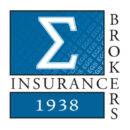RISK MANAGEMENT
Insurance as a risk transfer mechanism is one of the 5 applicable techniques in an integrated risk management process. Actually, insuring a risk is the last and most expensive option within the risk management process. It is therefore profound that, especially in medium and large companies (and organizations), proper insurance requires the application of risk management in all 4 categories of insurable risks, property, pure financial risks, liability, human resources.
By definition, a Risk Management process aims, on the one hand, to evaluate the risks and perils of interest, and on the other hand, to minimize the overall cost of managing and dealing with these risks.
The evaluation of risks and perils is achieved by determining the frequency of their occurrence within a period of five or ten years, along with recording the average damage (severity) they cause. In addition, the Probable or/and Estimated Maximum Loss (PML/EML) is calculated for each identified risk/peril, and for each address separately.
Risks/perils of high frequency and low severity are usually treated by improving protection measures. On the contrary, the risks/perils that show low frequency and high severity (intensity) are effectively treated with their transfer to insuranc e companies. The Risk Management process results in a comprehensive written insurance schedule (Draft or Broking slip) which provides the entrepreneur or executive with the necessary specifications and terms for the market research and finally the risk placement. Especially for manufacturing companies, a complete risk management process might also require a pre-risk technical survey (plus asset evaluation) by a qualified engineer, subjected to periodic updates.
